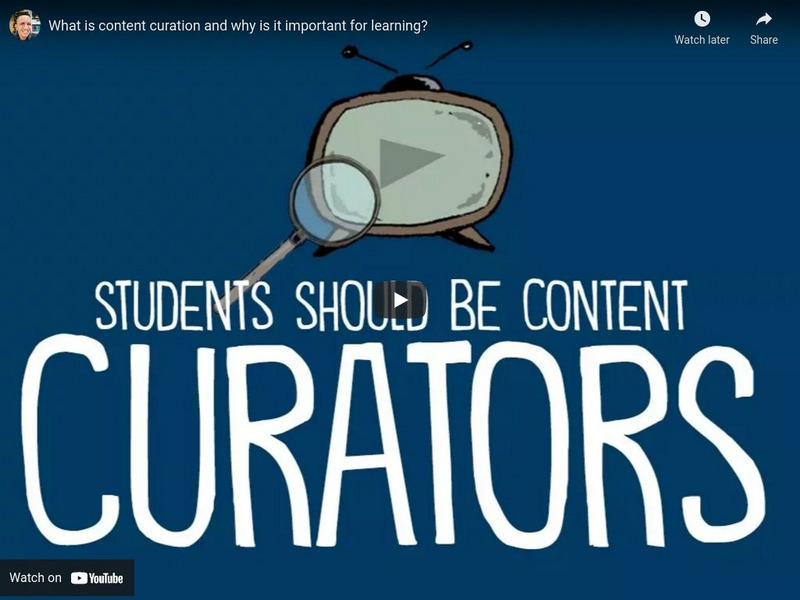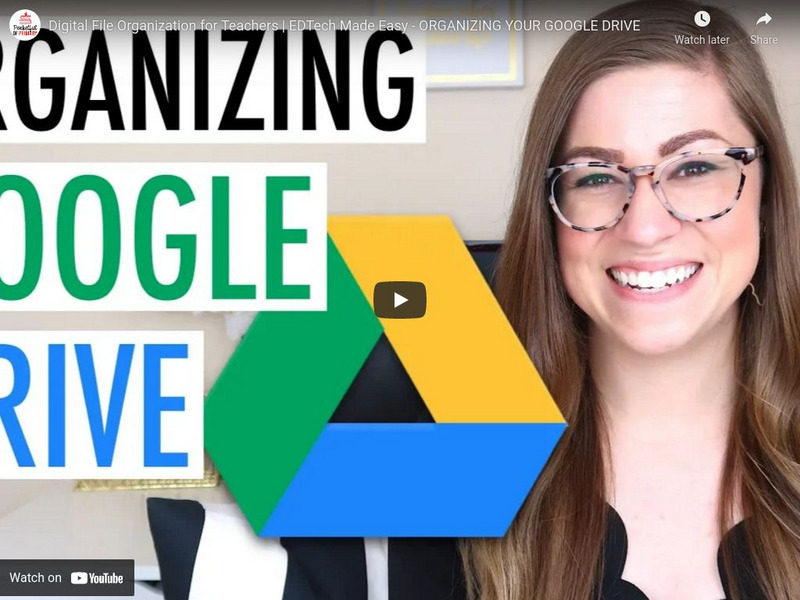Hi, what do you want to do?
Crash Course
Data and Infographics: Crash Course Navigating Digital Information #8
One-hundred percent of those reading this sentence are human beings. Wait, what? With part eight in the Crash Course: Navigating Digital Information set, pupils learn how to think critically about statistics. Scholars discover how...
Crash Course
Evaluating Photos and Videos: Crash Course Navigating Digital Information #7
When it comes to viewing videos and photos on the Internet, seeing is not always believing. With part seven from the Crash Course: Navigating Digital Information series, scholars learn that even image-based evidence can be unreliable....
Crash Course
Evaluating Evidence: Crash Course Navigating Digital Information #6
How do scholars learn to differentiate between good evidence and not-so-good evidence? The sixth installment from the Crash Course: Navigating Digital Information set is a great place to start. Pupils discover how to find reliable...
Crash Course
Using Wikipedia: Crash Course Navigating Digital Information #5
Wikipedia may get a bad rap, but does it have any redeeming qualities? As it turns out, it does, and scholars discover what they are with part five from the Crash Course: Navigating Digital Information video series. Pupils learn about...
Crash Course
Who Can You Trust? Crash Course Navigating Digital Information #4
The best way to understand a website is (drumroll, please) ... to leave the website? Scholars make sense of some strange advice by watching part four in the Crash Course: Navigating Digital Information set. As they watch, they learn...
Crash Course
Check Yourself with Lateral Reading: Crash Course Navigating Digital Information #3
According to author John Green, who narrates the series, lateral reading may just be one of the most critical skills of the 21st century. So what is it? With the third installment from the Crash Course: Navigating Digital Information...
Crash Course
The Facts about Fact Checking: Crash Course Navigating Digital Information #2
How can people help make the Internet a positive force in their own lives and the lives of others? Pupils set out to answer just that question with part two from the Crash Course: Navigating Digital Information series. Narrator John...
Crash Course
Introduction to Crash Course Navigating Digital Information #1
Not everything on the Internet is accurate, so how can people learn to steer clear of false or misleading information? With part one of the Crash Course Navigating Digital Information series, scholars learn why it's important to use...
GCFGlobal.org
Always On in a Digital World
As the world becomes increasingly digital, one can't help but wonder if it's possible to be too connected? Pupils explore the topic using the eighth video from the digital media literacy playlist. They learn about the effects of being...
GCFGlobal.org
Deconstructing Media Messages
What are media messages really saying? Scholars use the seventh installment from an extensive digital media literacy set to answer the question. They discover how to deconstruct media messages by asking about the source, recognizing...
GCFGlobal.org
Recognizing Persuasive Language
Lose 10 pounds in one day, guaranteed! With the sixth installment from the digital media literacy series, scholars identify common types of persuasive language. They learn to look beyond techniques such as telling stories, presenting...
GCFGlobal.org
How Filter Bubbles Isolate You
How do algorithms personalize each Internet user's online experience? Learners discover the answer in the fifth installment from the digital media literacy series. They explore the concept of the filter bubble, a term used to describe...
GCFGlobal.org
How Social Media Stars Make Money
Don't forget to like, comment, and subscribe! With the fourth video from the digital media literacy series, scholars learn how social media stars make money by gaining subscribers. They discover how paid advertisements, product...
GCFGlobal.org
How Ads and Clicks Shape the Internet
What impact do advertisements have on Internet users? Pupils explore the topic in the third video of the digital media literacy set. Scholars discover the tactics advertisers use to get people's attention (and clicks). They learn about...
GCFGlobal.org
Tips for Reading Webpages
How is reading a webpage different from reading a book? Scholars explore the topic using the second video from a larger digital media literacy series. Pupils learn tips for reading webpages more quickly and efficiently; specifically,...
GCFGlobal.org
Judging Online Information
Limitless knowledge is only a mouse click away, so how can people make sure they're getting the best information possible? Using the first video in the digital media literacy series, scholars learn how to evaluate the information they...
Crash Course
Online Advertising: Crash Course Media Literacy #7
Ever notice how that pair of shoes you looked at online last week seems to be following you? Introduce young consumers to the world of online advertising with a well-written, media literacy video, part of an ongoing series. Viewers...
Crash Course
Introduction to Media Literacy: Crash Course Media Literacy #1
How well does your class understand the types of media they use every day? Introduce them to the concept of media literacy with the first video in a Crash Course series on media literacy. Viewers discover the definition and types of...
New Zealand Ministry of Education
Te Kete Ipurangi: E Competencies and Key Competencies
Kellie McRobert outlines some work that has been done linking e-Learning and the key competencies. In this talk Kellie McRobert explains how she has developed an e-Learning framework she calls 'e-competencies' and how these have been...
Other
John Spencer: Students Should Be Content Curators
Find out why students should be curators of content. [1:21]
Other
Centerline Digital: What Is Content Curation?
Content curation can be a powerful tactic in establishing yourself as a thought leader. But, just like the museum curator, the key to success centers on what you add to the presentation of that specific topic that helps deliver meaning...
Other
Ed Tech Made Easy: Digital File Organization for Teachers
Find out some tips and tricks for organizing your Google Drive files. [14:23]
Khan Academy
Khan Academy: Introduction to Channel Capacity
Introduction to Channel Capacity & Message Space.
Khan Academy
Khan Academy: Information Entropy
Finally we arrive at our quantitative measure of entropy.




























